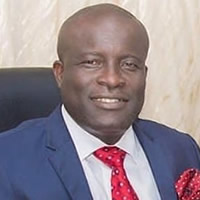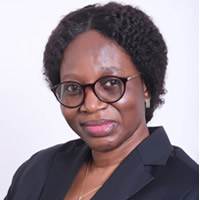
Out of a population of 1,945,284 persons aged 15 years and older, 1,377,903 or 70.8 per cent are economically active. Among the economically active population, 82.6 per cent had worked, 4.0 per cent had jobs but did not work and 13.4 per cent are unemployed. The region’s unemployment rate (13.4%) is higher than the national figure of 10.4 percent.
The occupational structure of the region shows that 42.0 per cent of the economically active population were engaged in sales and service occupations, while professional, technical and related workers comprise 10.8 percent. The three largest occupational groups among males are production, transport operators and related workers (29.6%), sales workers (19.4%), and clerical and related workers (14.4%), compared with 42.0 per cent of females in sales occupation, 19.5 per cent in production, transport and equipment, and 13.9 per cent in service occupations. The industrial sector is dominated by wholesale and retail trade (30.4%) and manufacturing (16.7%).
A higher proportion of females (39.0%) are in wholesale and retail trade compared to 22.2 per cent of males. Female are three times more likely than males to be in the hotels and restaurant industry. The third largest group of male workers (10.9%) is in transport, storage and communication.
More than half of the economically active population in the region is self-employed with employees, while a third (32.6%) is employees. A much larger proportion of females (62.6%) than males (41.6%) are self-employed without employees, implying that males are 1.5 times more likely than females to be employees. The private informal sector, which employs 6 out of every 10 economically active persons, plays a leading role in the economy of the region.
Females (69.1%) dominate the private informal sector, compared with 55.8 per cent of males in this sector. On the other hand, a higher proportion (40.7%) of males than females (28.5%), are employed in the public and private formal sectors.
Over 68 per cent of the population aged 15 years or older in each district are economically active. Higher proportions of males, compared to females, are economically active. The highest unemployment rate was recorded in Tema (16.0%) followed by Ga (13.3%) and AMA (13.2%). In each district, the proportion of unemployed females is higher than that of males.
Two different patterns of occupation characterise the districts. Sales workers and general workers are the two major occupations in AMA, Tema and Ga. In both Dangme West and Dangme East, about half of the economically active population are engaged in agriculture, animal husbandry, fishing and hunting, followed by sales workers.
Two groups of districts emerge with regard to the type of industry of the economically active population. The main industry in AMA, Ga and Tema is wholesale and retail trade. In the three districts, the proportion of females in wholesale and retail trade exceeds that of males.
Agriculture/hunting/forestry is the main industry in Dangme West (40.8%) and Dangme East (36.8%). In Dangme East, fishing is the second largest industry. More than half of the economically active population in Ga (56.3%) and over two-thirds in Dangme West (70.8%) and Dangme East (74.3%) are self-employed without employees.
In AMA and Tema, the proportions of self-employed without employees are less than half. In all the districts, females are more likely than males to be self-employed without employees. The second largest group is employees, ranging from 14.0 per cent in Dangme East to 38.2 per cent in Tema.
The analysis of the economically active population by institutional sector underscores the dominance of the private informal sector in the economies of the districts. The proportion engaged in the private informal sector ranges from 57.8 per cent in Tema to 84.5 per cent in Dangme East. In all the districts, the female proportions are much higher than those for males. The predominance of the private informal sector underlines the need to create an enabling environment to maximize its contribution to economic activity in the districts.
Type of Activity
Out of a population of 1,945,284 persons aged 15 years and older, 1,377,903 or 70.8 per cent were economically active, while 567,381 or 29.1 per cent were not. Among the economically active population, 82.6 per cent had worked, 4.0 per cent had jobs but did not work and 13.4 per cent were unemployed during the seven days before census night. It is noted that the proportion unemployed (13.4%) is slightly above the national figure of 10.4 percent. The proportion of employed persons in 1984 is 92.3 per cent. In 2000, a slightly higher proportion of males (87.0%) than females (85.7%) was employed, while the reverse is the case in 1984.
Students (35.9%) and homemakers (25.8%) form the highest proportions of the noneconomically . Persons who could not work on account of old age constitute 6.5 per cent and the retired/pensioners make up 4.9 percent. A large proportion (15.7%) of inactive population includes beggars, voluntarily unemployed and persons living on independent income or remittances.
Of the economically active males aged 15 years and older, 83.5 per cent worked while 3.5 per cent had jobs but did not work. The corresponding figures for females are 81.7 per cent who worked and 4.5 per cent who had jobs but did not work. Females (13.8%) tend to be slightly more unemployed than males (13.0%). For the non-economically active population, students form the largest group. As expected, the proportion of male students (42.0%) is higher than that of females (30.7%), while females are about one-and-a-half times as likely as males to be homemakers.
Occupation
The occupational structure shows that 42.0 per cent were engaged in sales and service occupations, with 24.7 per cent as production, transport and equipment operators. As expected, the region has a larger concentration of professional and technical workers (10.8%) compared to the national figure of 6.5 percent. On the other hand, agriculture, animal husbandry and forestry, fishermen and hunters, do not feature as prominently (9.1%) as is the case for the country as a whole (49.1%).
There are sex differences in terms of type of occupation. The four largest male occupational groups are production, transport operators (29.6%), sales (19.4%), clerical and related workers (14.4%) and professional, technical and related workers (13.4%). In contrast, females are mainly sales workers (42.0%), production, transport and equipment operators, (19.5%) and service workers (13.9%).
Industry
In the Greater Accra Region, wholesale and retail trade (30.4%) and manufacturing (16.7%) are the dominant branches of activity, as was the case in 1984 (with 29.9% wholesale and retail trade and 19.1% manufacturing).
About 7.9 per cent of economically active persons are engaged in agriculture, hunting, forestry and fishing industry. This proportion is far below the national average of 52.1 percent. 39.0 per cent of females are in wholesale and retail trade compared to 22.2 per cent of males. There is no sex differential as far as manufacturing is concerned. However, females are about three times more likely than males to be in hotels and restaurants industry.
Employment Status
More than half (51.8%) of the economically active population are self-employed without employees, while 32.6 per cent are employees. A much larger proportion of females (62.6%) than males (41.6%) are self-employed with no employees. Males are 1.5 times more likely than females to be employees.
Type of Activity
The major occupation in the Greater Accra region is sales work (30.4%), followed by production, transport operators and related workers (24.7%). The pattern of occupation in Dangme West and Dangme East however is very different from that of AMA, Tema and Ga.
This is due to the geographical location and the administrative nature of the districts. For instance, Tema and AMA are the main gateways to the country for most goods and services. AMA is the seat of government and Ga takes most of the excess population and land pressures from AMA. Activities in these three districts are therefore likely to be similar.
Sales workers are predominant in AMA (34.0%) and Tema (26.8%). For these two districts, the proportion of females is twice that of males. On the other hand, workers in agriculture, animal husbandry, fishermen and hunters constitute the major occupation in Dangme West (50.2%) and Dangme East (52.3%).
In each of these two Dangme districts, a high proportion of males engage in agriculture and related work, the proportion of males being more than half in each district. Sales workers are the second most important occupation in Dangme West (16.4%) and Dangme East (15.4%), with the proportion of females being more than three times that of males.
Industry
The two major industrial activities in the region are wholesale and retail trade (30.4%) and manufacturing (16.7%). Agriculture, fishing and forestry, the most predominant industry in the country, comes as the third major industry in the region, contributing 7.9 percent. Two groups of districts again emerge as regards the type of industry for the economically active. In AMA, Ga and Tema the main industry is wholesale and retail trade. While AMA has a third of the economically active population in this industry, Tema and Ga contribute slightly over a quarter.
In the three districts, the proportion of females is about twice as high as that of males. In Dangme West and Dangme East, on the other hand, agriculture, hunting and forestry is the main industry, accounting for about a third of the economically active population and involving more males than females.
Fishing is the second largest industry in Dangme East. The second major industry for AMA, Ga and Tema is manufacturing, ranging from14.9 per cent in Ga to 18.5 per cent in Tema; AMA and Tema have most of the industries in the country. There is not much sex differential for those engaged in the industrial sector in these three districts. Wholesale and retail trade, the second major industry in Dangme West and Dangme East, involves a much higher proportion of females than males.
Employment Status
More than half of the economically active persons in the region are selfemployed without employees (51.8%) with much higher proportions in Dangme West (70.8%) and Dangme East (74.3%). This pattern is observed for both males and females and persists in all the districts except the AMA and the Tema municipality, where the proportions are lower than half.
In the region as a whole, higher proportion of females (62.6%) than males (41.6%) is self-employed without employees. The employee categories vary considerably from 38.2 per cent in Tema, 34.0 per cent in AMA and 28.4 per cent in Ga to below 20 per cent in the two Dangme districts. The proportion of males who are employees is higher than that of females in all the districts.
The proportion of persons who are self-employed without employees is higher than that for selfemployed with employees. For instance, this proportion ranges from 47.8 per cent in the Tema municipality to 74.3 per cent in Dangme East. In all the districts in the region, the proportion of females who are self-employed without employees is much higher than that for males.
The proportion of the self-employed with employees ranges from 4.8 per cent in the more rural Dangme East to 7.7 per cent in the more urban AMA. Apart from the Tema municipality where the tilt is towards females, for the other districts, there are very minimal sex differentials, in favour of males for the other districts.
Unpaid family workers are relatively more common in the more rural Dangme East (4.0%) than in the more urban AMA (1.2%). The pattern in the districts gives an impression that it is more a rural than urban phenomenon. The high proportion of self-employed without employees which has increased from 49.0 per cent in 1984 to 51.8 per cent in 2000 has economic implications for the region.
In order to tap the full potentials of this large work force, there is the need to equip them with the necessary skills to contribute to sustainable development. Soft loans could be provided to enable them expand their businesses.
Employment Status of People With Past School Attendance
For persons who have been to school in the past, the level of educational attainment has some influence on employment status. Persons whose highest educational level is pre-school or primary, middle or junior secondary school are mostly self-employed without employees, the proportion ranging from 56.3 per cent for those with preschool education to 62.3 per cent for those with primary education.
On the other hand, persons who have secondary or senior secondary school education, vocational/technical, post secondary or tertiary, are mostly in the employee category. The proportion of employees ranges from 46.7 per cent for persons with vocational/technical level to 61.1 per cent for persons with post secondary (non tertiary) education.
Institutional Sector Of Employment
The distribution of the economically active population by institutional sector by district and sex. Majority of the economically active population in the region are in the private informal sector (62.3%), in all districts and for both sexes. The proportion of females in the private informal sector (69.1%) is higher than that of males (55.8%), a pattern which is repeated in all districts of the region.
To a lesser extent, 23.3 per cent of the economically active population are in the private formal and 11.5 per cent in the public sector. For both public and the private formal sectors, it is more common to find higher proportions of males than females. The proportion of persons engaging in non-governmental or international organizations (0.5%) is not high but relatively higher in AMA (0.6%) and also among males in all districts.
The private informal sector engages comparatively higher proportions of persons in the Dangme East (84.5%) than the AMA (60.0%) and in all the districts, more females than males are in the informal sector. The public sector has a larger proportion of persons in Tema municipality (12.7%), AMA (12.5%) and Ga (9.6%) than each of the two Dangme districts.
The Tema municipality, with a large number of private industrial establishments, has the highest proportion (26.0%) of persons engaged in the private formal sector. The non-governmental organizations or international organizations in the AMA employ a higher proportion of persons in AMA (0.6%) than the other districts. In each district the persons employed in this sector are mainly males.
Working Children
There is enough evidence in Ghana that children as young as seven years do engage in family enterprises (Ghana Statistical Service, 2003). The Children’s Act of 1998 prohibits children less than 13 years from doing any work for pay or profit. Children who are younger than 13 years and do any work for pay or profit can be described as working children. In line with this, the 2000 Population and Housing Census collected information on economic activity from persons aged seven years and older.
An attempt was made to glean from the data the phenomenon of working children in the districts. This was done by calculating the proportion of economically active persons aged 7-14 years out of the population of persons aged 7-14 years. In general, slightly more than one out of every 10 persons aged 7-14 years is economically active. Females in this age group tend to be more economically active than males. The proportion of economically active males aged 7-14 years ranges from 9.1 per cent in Tema to 18.3 per cent in Dangme East.
Among females, it varies from 10.1 per cent in Tema to 17.5 per cent in Dangme East. The two Dangme districts have higher proportions of working children than in AMA, Ga and Tema, a phenomenon not unrelated to lower enrolment in primary school.
Date Created : 11/29/2017 3:53:48 AM












 facebook
facebook
 twitter
twitter
 Youtube
Youtube
 +233 593 831 280
+233 593 831 280 0800 430 430
0800 430 430 GPS: GE-231-4383
GPS: GE-231-4383 info@ghanadistricts.com
info@ghanadistricts.com Box GP1044, Accra, Ghana
Box GP1044, Accra, Ghana